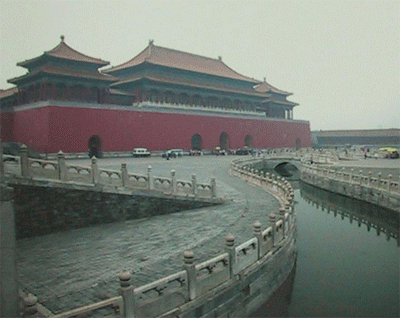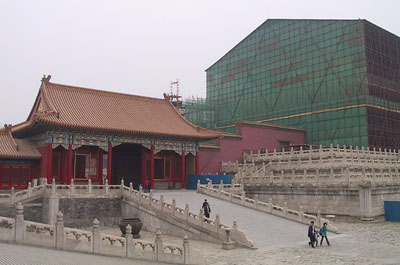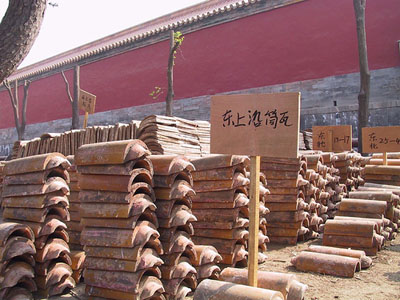Regeneration
In The Future of the Past, Alexander Stille expands on a comment by Italian conservator Michele Cordaro:
“The Chinese, like the Japanese and some other Asian nations, have a tradition of conserving by copying, or rebuilding.”
Conserving by rebuilding made considerable sense in China, where, until recently, virtually everything — palaces, temples, and houses — was built of wood. Paradoxically, in architecture, working in perishable materals could potentially offer a superior conversation strategy: rotting wooden parts could simply be replaced as needed so that, just as our bodies replace their old cells with new ones while we remain “ourselves,” the buildings would be constantly regenerated, remaining forever new and forever ancient.
Seems logical, but in practice Western conservation is based on a philosophy of repair rather than replacement. This stems from the West’s long privileging of permanence and originality in art (even when what we praise isn’t in fact permanent or exceptionally original). Copies are considered at best qualitatively lesser; at worst, acts of piracy.
These conflicting attitudes toward monuments are related to profound cultural differences. China and Japan have traditionally had a cyclical view of time. Dynasties would rise and fall, be replaced by new ones, but, like the Forbidden City, reemerging from its latest fire, remain fundamentally the same: each ruling group held the “mandate of heaven” …. In a world that was both eternal and ever-changing, rebuilding monuments made perfect sense.
This past week I had the good fortune to be invited on a tour of the renovation of the roof of the Hall of Supreme Harmony at the Forbidden City in Beijing. This is the most important of the hundreds of buildings at the Forbidden City, now known also as the Palace Museum. The whole museum is being upgraded (as is all of Beijing, for that matter), but the work is most intense at the Hall of Supreme Harmony where a giant scaffolding and tent covers the swarm of workers who are in the process of removing the thousands of decaying terracotta tiles to get at the wooden infrastructure of the roof. The tiles are being meticulously removed and remade. The roof itself is imperceptibly sagging and this will be repaired too. The intricately painted outer beams will be repainted, resulting in stunning before and after comparisons. (Full photoset tour at Flickr.)
This is a less extreme version of wholesale rebuilding of cultural sites that Stille details in his study of Chinese conservation, but it is an example nonetheless. Only a specialist could point to what is original to the hall’s 1406 construction and what parts are copies installed since. This happens in the West too, of course, but the difference as I’ve experienced it in China is that it doesn’t matter. The originality of the building is the idea of it, what it represents.
The Palace Museum has a partnership with the Japanese printing company Toppan to create a detailed, high-resolution virtual replica of the Forbidden City. Right now only three of the main halls, including Supreme Harmony, are complete. The effect of moving about the virtual grounds in the wrapround-style theater is powerful, though in the people-free virtual model the awe created by the buildings’ scale is missing. There’s little aura to the simulacrum. The model will improve, of course, as the technologies of virtuality improve.

Comparison of a photograph and a still from the virtual model
No one claims that the model is the Forbidden City, but then you don’t get the usual quasi-apologies about its not being the “real” thing either. Most 3D modelling in cultural heritage is done for a specific purpose — reconstruction of what has been lost, for instance — and is treated as a teaching tool or a research resource. Not so at the Palace Museum. It will be interesting to see how this copy evolves.















